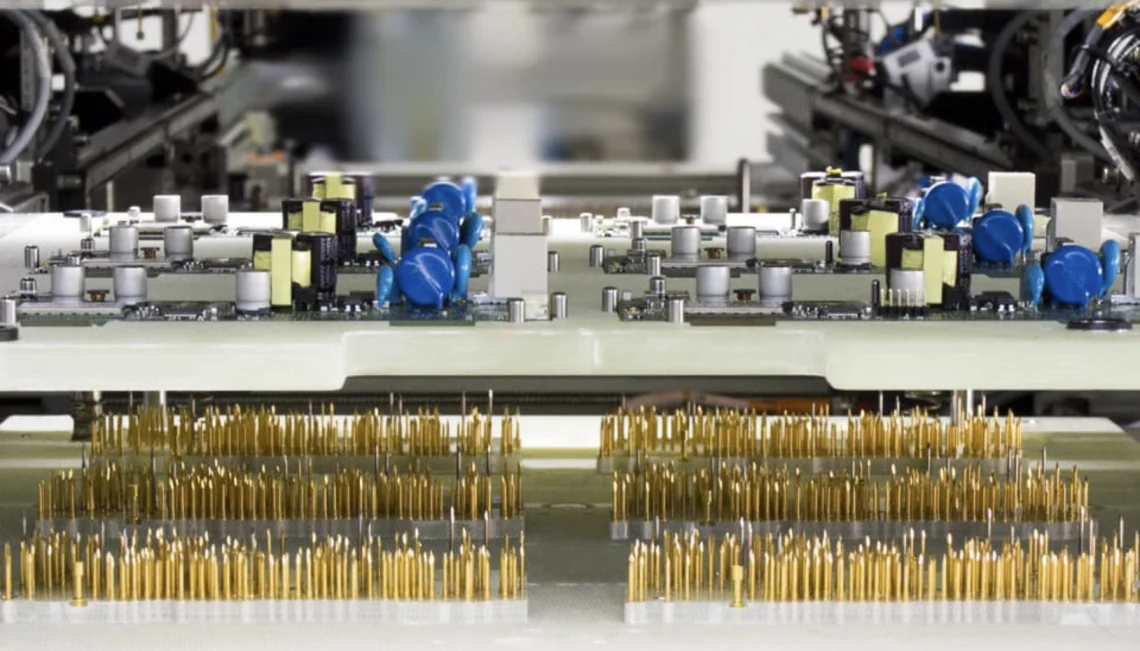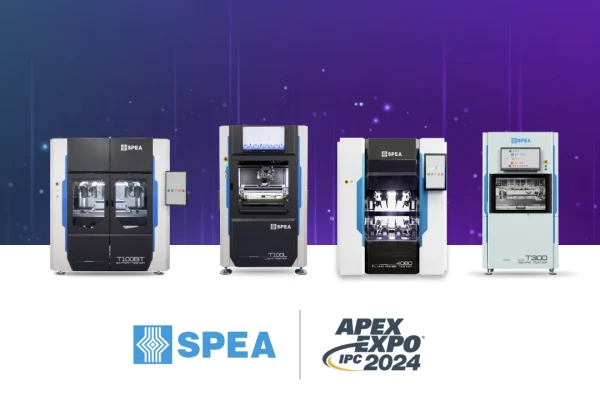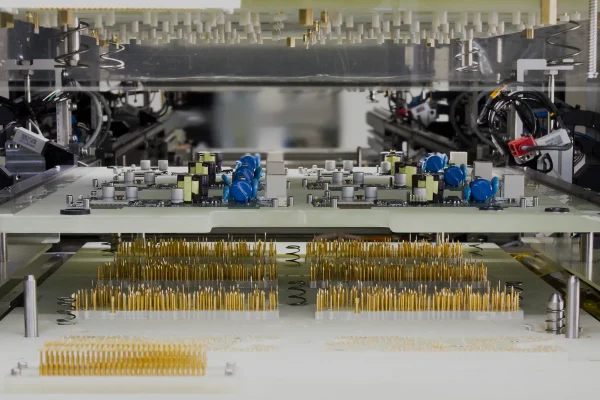Turin (Italy)
January 23, 2024
In-Circuit testing: detecting electronic board defects

What is In-Circuit testing and which are its advantages?
In-circuit testing is a common test method, used in high-volume manufacturing environments, that verifies the performance and the integrity of electronic printed circuit boards before they leave the production floor.
Through fixed probes making electrical connections with the PCB test points, ICT detects any possible electrical defect either on the board or in the installing components.
Although there are several ways and techniques of testing PCBA and detecting defects, automatic in-circuit testing better handles fast and high-volume manufacturing scenarios requiring greater accuracy, wider test coverage, and shorter test time.
The ideal to ensure total functionality of the electronic boards in mass productions is to have bed-of-nails test equipment for ICT being able to run accurate inspections without compromising production rates and costs.
SPEA automatic in-circuit testers meet this demand successfully by harmonizing high-volume testing and low costs with the requirements of accuracy and reliability.
This is also expressed in the guidelines for the SPEA T300 in-circuit tester, the innovative bed-of-nails test equipment.
Dual-Site test area for faster In-Circuit testing
Based on an efficient dual-site architecture, that allows parallel testing of one electronic board model or two different board models at the same time, the SPEA T300 in-circuit tester detects electronic board defects running a real-time variety of testing techniques, including ICT, digital and analog functional testing, flashing, power testing, integrated into the production line.
This feature eliminates the need to increase the number of in-circuit testers in manufacturing to cover high-volume productions with benefits that include lower investments associated with maintenance and industrial space.
Parametric ICT prevents product returns
With its extreme measurement accuracy and advanced parameterization algorithms, the SPEA T300 bed-of-nails tester is a step ahead in early detecting defects.
Able to point out electronic boards’ weak components, that are correctly operating when standard ICT is run but that will cause electronics malfunctions during use, this in-circuit tester prevents unwanted returns from the field that typically generate considerable business losses.
In-Circuit testing autonomy ensures continuity
The flexibility to perform in-circuit testing at any time with few operator interventions and the possibility to rely on advanced diagnostic tools capable of constantly monitoring the status of the in-circuit testers is becoming increasingly important to ensure production continuity.
The SPEA T300 bed-of-nails tester can be configured in several automatic operating modes, including integration into the production line, the combination with robots, or automatic board loaders/unloaders eliminating any manual operations.
Additionally, it embeds smart sensors to monitor its performance, optimize its use, and predict maintenance reducing any risk of testing interruptions and delays.



